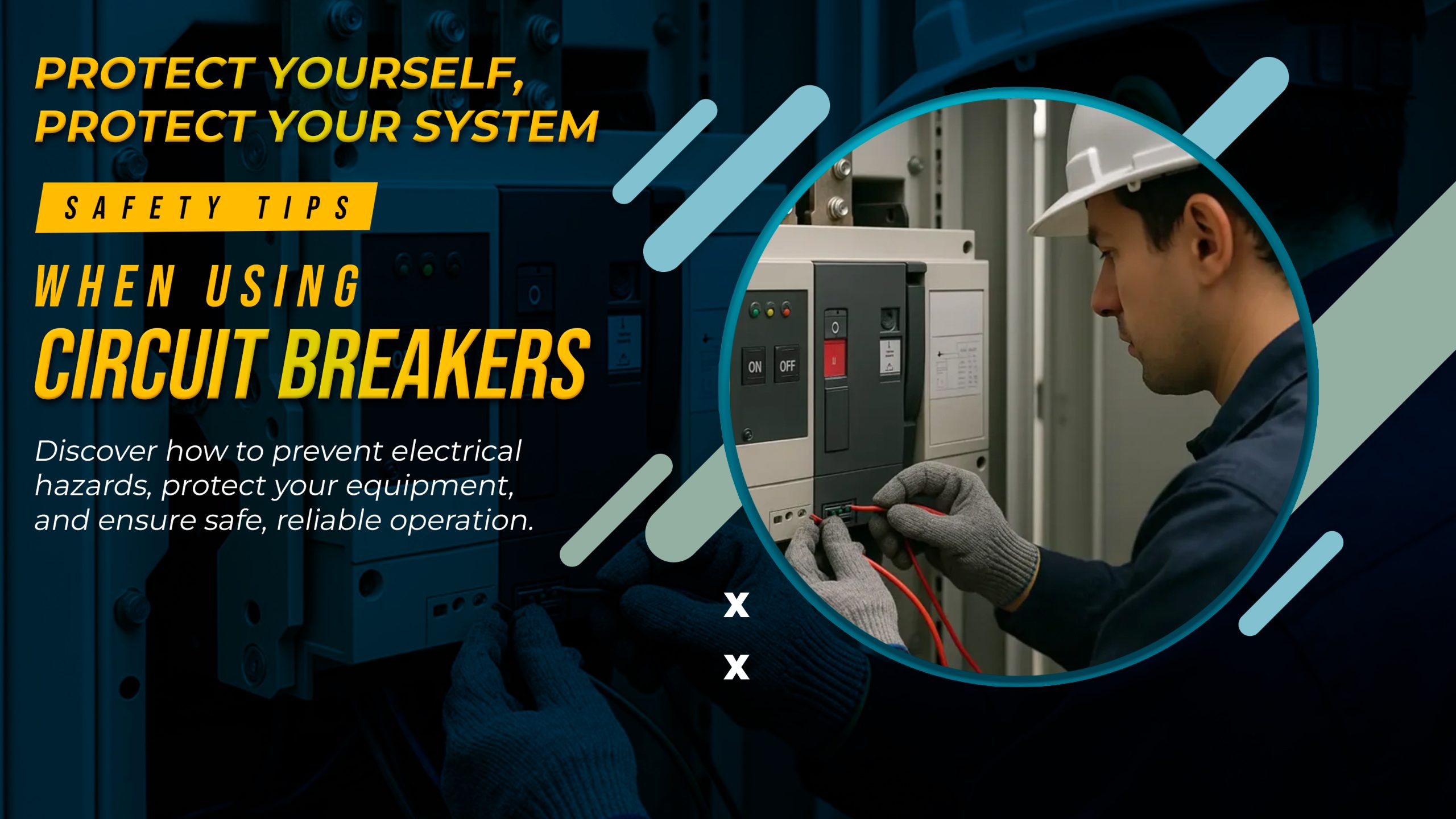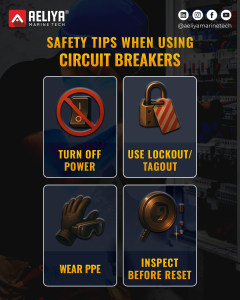What is a Circuit Breaker?
A circuit breaker is an on/off switch-like device that automatically breaks the flow of electricity if a fault like an overload or short circuit develops. A fuse, on the other hand, needs to be replaced after it has blown. A circuit breaker, however, can be reset after tripping.
They are most often used in:
- Domestic homes to safeguard appliances and wires.
- Commercial buildings to manage multiple circuits securely.
- Industrial factories and sea-based systems where heavy equipment needs stable and shielded power supply.
Why Safety with Circuit Breakers Matters
Avoiding Fire Danger – Malfunctioning handling may lead to overheating or sparking.
Shielding Equipment – Delicate electronics get damaged if breakers are mishandled.
Preventing Electrical Shock – Direct exposure to energized components is extremely risky.
Ensuring System Reliability – Safe breaker application means uninterrupted power distribution.
Safety Reminders When Working with Circuit Breakers
1. Be Aware of Your Breaker’s Capacity
Each breaker has an amperage rating. Do not overload appliances or devices beyond the breaker capacity, as this will lead to continuous tripping or heating up.
2. Never Force a Breaker Handle
When a breaker trips, it’s performing as intended. Forcing the switch back to on without finding the cause may be risky. Always check why the breaker tripped before resetting.
3. Switch Off Power Before Maintenance
Prior to doing any inspection, cleaning, or wiring repairs, ensure the breaker is off. Use insulated tools to prevent electric shock.
4. Provide Access to Breaker Panels
Don’t obstruct access to breaker panels with equipment, storage boxes, or furniture. In the event of an emergency, fast access is essential.
5. Prevent Wet Situations
Never handle a breaker panel with damp hands or in moist areas. Water greatly enhances the chance for electric shock.
6. Clearly Label Your Breakers
Labeling properly helps you understand what breaker operates what circuit. This avoids confusion and unintended shutdown of important systems.
7. Inspect Regularly
Breakers, as with all electrical devices, deteriorate after some time. Get a licensed electrician check your breaker panel periodically so everything remains in safe working order.
8. Replace Faulty or Old Breakers
Old breakers can fail to trip, posing increased fire hazards. Replace them at once if you see burning odors, cracking, or discoloration.
9. Wear Proper Protective Equipment
For work or marine settings, use gloves, insulated boots, and other protective equipment when working in the vicinity of high-voltage breakers.
10. Train Household and Team Members
Make everyone in the household or workplace aware of the breaker panel location and essential safety procedures in the event of an emergency.
Common Mistakes to Avoid
- Repeatedly resetting a breaker without addressing the real issue.
- Utilizing temporary fixes such as placing objects to hold a breaker in position.
- Disregarding buzzing noises, warmth, or strange smells around the panel.
- Overloading power strips and assuming the breaker can carry it all.


